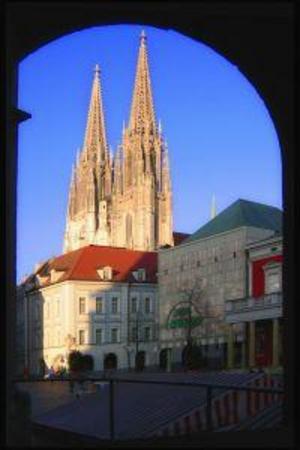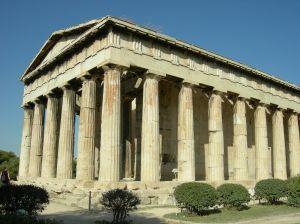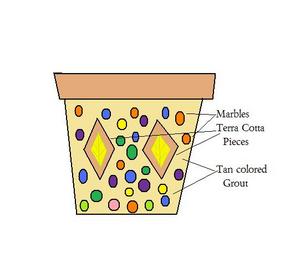Germany has a rich history that dates back to the Roman Empire. Throughout Germany are historic towns, cities, castles, churches and landscapes. Of the many historic sites in Germany, several have been selected as having outstanding cultural value by the United Nations. The United Nations, UNESCO, has a running list of significant sites throughout the world. Following are towns and landscaped in Germany that have been selected for the World Heritage List.
Frontiers of the Roman Empire: The site consists of the sections of the border line of the Roman Empire during the 2nd century. Roman Limes” stretched over 5,000 km from the Atlantic coast of northern Britain, throughout Europe to the Black Sea, across North Africa to the Atlantic coast. There are vestiges of the site which include remains of ramparts, walls, ditches, watchtowers, forts and civilian settlements. The”Hadrians’s Wall” is part of the transnational property.
Hanseatic City of Lubeck, State of Scheswig-Holstein: Lubeck is the formal capital and Queen City of the Hanseatic League. Lubeck was founded in the 12th century and prospered until the 18th century. It was a major trading center for northern Europe and continues to be a center for maritime commerce, particularly with the Nordic countries. The city sustained damage during World War II, but the basic structure of the old city remains. The historic city consists of 15th and 16th century patrician residences, public monuments, the famous Holstentor brick gate, churches sand salt storehouses.
Town of Bamberg, District of Upper Franconia, State of Bavaria: The town dates from the 10th century. It was an important link with the Slave peoples, particularly those from Poland and Pomerania. The period of Bamberg’s greatest prosperity as the 12th century onwards. Bamberg’s architecture strongly influenced northern Germany and Hungary. Bamberg was the centre of the Enlightenment in the 18th century.
Volklingen Ironworks, State of Saarland: The only intact example in all of western Europe and North America of an integrated ironworks. It was built and equipped in the 19th and 20th centuries.
Messel Pit Fossil Site, District of Dramstade-Disburg, State of Hesse: Messel Pit is a rich site with for understanding of the living environment of the Eocene period. Well preserved mammal fossils provide unique information.
Bauhaus and its Sites in Weimar and Dessau, States of Saxony-Anhalt and Thuringia: The Bauhaus School revolutionized architecture and aesthetic concepts. The Modern Movement was launched here, shaping much of 20th century architecture.
Classical Weimar, State of Thuringia: Weimar witnessed a cultural flowering in the late 18th and early 19th centuries. The small town attracted many fine writers and scholars of the period, notable Goethe and Schiller. The town was selected for the high artistic quality of the public an private parks and buildings around the town
Museumsinsel (Museum Island, Berlin: The origins of this museum date the 18th century Age of Enlightenment. There are five museums built between 1824 and 1930. Each museum was designed to establish an organic connection with the art contained withing. The museum’s collections trace the development of civilizations throughout the ages. The museum was selected as antique collection of museum buildings, which illustrate the evolution of modern museum design.
Garden Kingdom of Dessau-Worlitz, State of Saxony-Anhalt: Exceptional example of landscape design from the Age of Enlightment”, which was a seminal period for landscape design. The Garden Kingdom is an exceptional illustration of landscape design.
Zollverein Coal Mine Industrial complex in Essen, State of North Rhine-Westphalia: Zollverein Industrial complex consists of the complete infrastructure of a historic coal mining site. There are some 20th century buildings are outstanding architectural merit. Selected as representative of a crucial period in the development of traditional heavy industries in Europe.
Historic Centres of Stralsund and Wismar, State of Mecklenburg-Western Pomerania: Medieval towns of Wismar and Stralsund are located in northern Germany on the Baltic Coast. The medieval towns were major trading centres on the Hanseatic League of the 14th and 15th centuries. They became Swedish administrative and defensive centers for the German territories in the 17th and 18th centuries. The Brick Gothic buildings influenced architecture and construction of brick cathedral, houses and public buildings.
Upper Middle Rhine Valley, States of Rhineland=Palatinate and Hesse: The stretch along the Rhine River features historic towns, castles and vineyards. The Rhine River is associated with history and legend, providing inspiration for artists, writers nd composes over history. The Rhine was selected as one of the most important transportation routes in Europe. The Middle Rhine Valley has facilitated the exchange of culture between the Mediterranean region and northern Europe for two millennia.
Dresden Elbe Valley, State of Saxony: Cultural landscape from the 18th and 19th centuries. The landscape of Dresden Elbe Valley extends 18 km along the river, form Ubigau Palace to PIllnitz Palace and the Elbe River Island. The landscape includes low meadows, 19th and 20th century villas, gardens and natural features. The Blue Wonder Steel Bridge (189101893), single rail suspension cable railway (1891-1901), the funicular (1894-1895), passenger steamships (1879), and shipyard (1900) are all still in use. The Dresden Elbe Valley was selected as a crossroads in Europe and culture, science and technology.
Muskakuer Park / Park Muzakowski, State of Saxony. Landscaped park on the Neisse River and the border between Poland and Germany. The park was created by Prince Hermann von uchler Muskau from 1815 to 1844. The park blends with the surrounding farmland. The park pioneered new approaches of landscape architecture in Europe and America. Selected as a exceptional example of European landscaping that influenced landscape design.
Town Hall and Roland on the Marketplace of Bremen, Bremen: Old Town Hall was built in the Gothic style in the early 15th century. In the 17th century, the town hall was renovate din the Weser Renaissance style. Roland Statue and the town hall are on the marketplace of Bremen in northwest Germany. Selected as testament to civic autonomy and sovereignty.
Old town of Regensburg withStadtamhof, Bavaria: Regensburg is situated on the Danube Rives in Bavaria. The medieval town has buildings of exceptional quality, testifying to its history as a trading center an is influence on the region in th 9th century. A number of historic structures span two millennia, including ancient Roman, Romanesque and Gothic buildings. 11th – 13th century architecture includes he market, City Hall and Cathedral. Medieval Patrician houses and towers, churches, monastic ensembles and the Old Bridge date from the 12th century. The town is also notable for it’s religious history, as a center of the Hole Roman Empire that converted to Protestantism.





